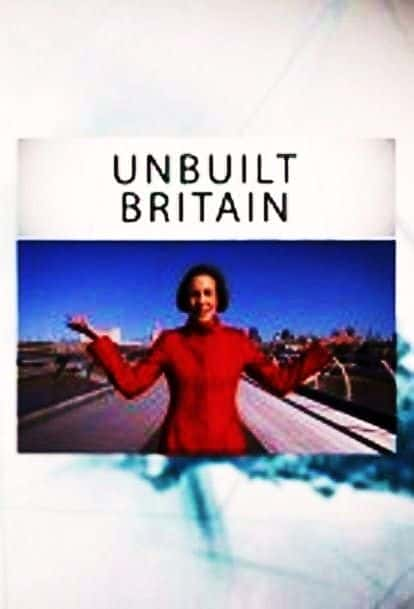|
|
Dreaming the Impossible: Unbuilt Britain - 纪录片1080P/720P/360P高清标清网盘迅雷下载

Dreaming the Impossible: Unbuilt Britain - 纪录片1080P/720P/360P高清标清网盘迅雷下载
Dreaming the Impossible: Unbuilt Britain,Adventures in Architecture,Architectures,Cruickshanks Adventures in Architecture,Documentary,The London Nobody Knows,2013,Arts,BBC,English,History
General Information:
Arts, History Documentary hosted by Olivia Horsfall Turner, published by BBC in 2013- English narration
Information
Dreaming the Impossible: Unbuilt Britain
Using her investigative skills to uncover long-forgotten and abandoned plans, architectural investigator Dr Olivia Horsfall Turner explores the fascinating and dramatic stories behind some of the grandest designs that were never built. Technology has always been a driving force behind new ideas. Olivia explores how architects and designers have been inspired by the exciting possibilities presented by new technology to produce groundbreaking and controversial urban plans.
Glass Houses
In 1855, visionary designer Sir Joseph Paxton proposed an ambitious plan to build a fantastic, futuristic ten-mile glass girdle circling the centre of London. It had only recently become possible to produce large sheets of cheap but strong plate glass and Paxton was inspired by its potential. With this exciting new technology at his fingertips, Paxton believed he could create a bright and pollution-free environment for Londoners as well as solve the capital's terrible congestion problems. His spectacular glass 'Great Victorian Way' would connect the city to the West End, link rich and poor areas and cross the Thames three times. Contained in this magnificent glass structure were shops, houses, hotels, a pedestrian walkway, a road for carriages and eight lines of elevated pneumatic railway. There was huge support for Paxton's scheme and Parliament passed a bill sanctioning construction, but the Great Victorian Way was never built. The 'Great Stink' took hold of London in 1858, spreading a cholera epidemic and so sanitation became the city's most pressing priority. Instead of creating a spectacular crystal boulevard the money was spent on a very different type of technology - the building of London's sewerage system.
Making Connections
In the early 1900s Britain was anticipating the threat of war. As concern grew about Germany expanding its naval fleet and investing in its infrastructure, there were calls to find a way for Britain's navy to be able to react swiftly to protect our waters. The solution proposed was to create a ship canal big enough for warships to cross from the Firth of Clyde on the west of Scotland to the Firth of Forth on the east. This enormous civil engineering endeavour would have completely changed the central belt of Scotland - the favoured route was through Loch Lomond, now considered one of the most treasured wilderness areas in the country. There was huge support for the building of the canal, not least from members of parliament who recognised the potential for creating jobs and wealth in their constituencies. The debate over whether to invest £50m of the public purse in building the canal dragged on for years in both the House of Commons and Lords, with opinion split on whether it really was a strategic imperative. In the end, technology decided the fate of the canal. By 1918, all of the naval fleet was fuelled by oil rather than coal and so instead of a canal an oil pipeline was built from the mouth of the Clyde to Grangemouth on the east, and royal navy destroyers never did - and never will - sail up Loch Lomond.
A Revolution in the City
In the concluding part of what’s been a fascinating series, Dr Olivia Horsfall Turner explores two grand city plans, both brought about in the aftermath of disaster, and which, had they been implemented, would have transformed London and Glasgow. In the capital, she uses complex software to investigate how the young Christopher Wren’s imaginative scheme to rebuild the City after the Great Fire of 1666 would have worked practically (and artist Paul Draper’s rendering of the scheme is stunning). Meanwhile in Glasgow, war and terrible overcrowding led to radically different schemes in 1945. While Sir Patrick Abercrombie advocated creating new towns, Robert Bruce’s plan would have entailed the “creative destruction” of the city along Modernist lines, but the sacrifices would have been enormous.
Technical Specs
Video: Codec: x264 CABAC High@L3.0
Video: Bitrate: 1515 Kbps
Video: Aspect Ratio: 1.778 (16:9)
Video: Resolution: 832 x 468
Audio: Codec: AAC LC
Audio: Bitrate: 128 Kbps VBR 48KHz
Audio: Channels: stereo (2/0)
Audio: English
Run-Time: 59mins
Framerate: 25fps
Number of Parts: 3
Part Size: average 692 MB
Container: Mp4
Source: PDTV
Encoded by: Harry65
Release Notes Merged Subtitles
☆☆☆~~~~~~~~~~~~~~~~~~~~~~~~~~~
Dreaming the Impossible: Unbuilt Britain - 纪录片1080P/720P/360P高清标清网盘迅雷下载
下载地址:
游客 文件下载链接就在这里,在您回复评论成功后才能显示。
请勿回复无意义的灌水内容。下拉页面到最底部回复或者 【点击此处快捷回复】,回复后返回此处即可查看下载链接。 如您没注册本站会员,可以点击 注册本站,注册后即可回复下载。 |
小贴士:【影视自媒体解说文案请移步:夏至文案解说网 www.xiazhi.vip】上一篇:Dreaming of a Jewish Christmas - 纪录片1080P/720P/360P高清标清网盘迅雷下载下一篇:The Dreams of William Golding - 纪录片1080P/720P/360P高清标清网盘迅雷下载
|